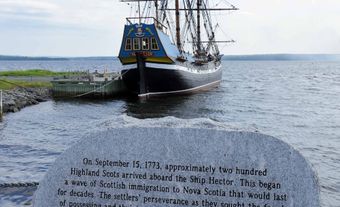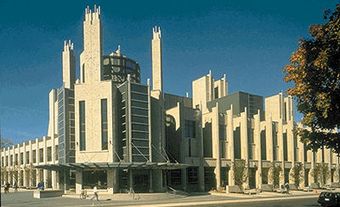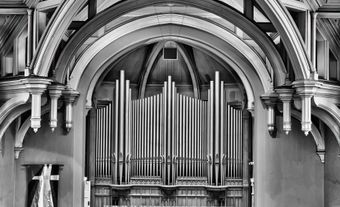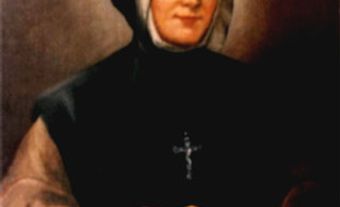All Christian churches of the "Reformed" tradition derive from the 16th-century Protestant Reformation and from Calvinism. Early Scottish settlers brought Presbyterianism to the Maritimes and central Canada in the late 18th century. In the 2011 National Household Survey (NHS), 472,385 Canadians identified as Presbyterian.

History
18th and 19th Century
Although French Calvinists (Huguenots) shared in the early fur trade, non-Catholics were officially barred from New France until the British conquest. Early Scottish settlers brought Presbyterianism to the Maritimes and central Canada in the late 18th century. Attempts by Scottish, Irish and American churches to organize congregations in the colonies and efforts to found an Indigenous Canadian Presbyterian church all failed, but by the early 19th century branches of the Church of Scotland and its smaller secessionist offshoots had been established. Their complex relations, caused by disagreements about church-state connections, were further confused in 1844 when some colonial members of the Church of Scotland started "Free" churches in sympathy with the Free Church Disruption in Scotland, which also stemmed from church-state disputes.
In 1860 and 1861 respectively, the Secession and Free churches in the Maritimes and in central Canada formed two regional unions. In 1875 these and the remnants of the Church of Scotland combined to form the Presbyterian Church in Canada, which the 1891 census showed to be the Dominion's largest Protestant denomination. Before the First World War (WWI) the new church expanded rapidly in the West and added missions in China, Korea, Taiwan and India to older ones in the Caribbean and Vanuatu. These foreign missions included large medical and educational operations that employed hundreds of Canadians. In that same period Canadian Presbyterians, both lay and clergy, actively supported the ideals of the Social Gospel movement in crusades for moral and political purity, Temperance and social justice.
20th Century
By the opening of the 20th century, the combination of nationalism, a co-operative climate in religion, and the expansionist spirit of the major Canadian Protestant denominations led the Presbyterian Church to seek union with other Protestant bodies in a single Canadian church. This movement was opposed by a Presbyterian minority, and when the United Church of Canada was formed in 1925 about one-third of all Presbyterians (chiefly in Montreal and Southern Ontario) refused to join. Those who continued as Presbyterians lost most of their educational and charitable institutions and home and foreign missions.
Since 1925, the total of members and adherents remained almost constant at about 800 000 until 1981, and decreased to 636 295 members in 1991. In 2011, 472,385 Canadians identified as Presbyterian.

Structure and Organization
All Christian churches of the "Reformed" tradition function through a system of presbyterian or representative elected courts often referred to as "corporate episcopy." The hierarchy of courts rises from the congregational session to presbytery to synod, and for the Presbyterian Church in Canada to the annual General Assembly.
The Presbyterian Church in Canada retains much of its Calvinist and Scottish heritage in its organization and church life, emphasizing the central role of preaching and scripture reading, and severe simplicity in worship and church decor. Nevertheless, it has abandoned harsher elements in Calvinist theology and practice, such as double predestination and rigid sabbatarianism (sabbath observance). Although linked historically most closely to Scotland, the Presbyterian Church contains congregations of French and Swiss, Hungarians, Koreans and Chinese. It maintains active connection with such co-operative Christian bodies as the World Council of Churches, the World Alliance of Reformed Churches, and the Canadian Council of Churches.
In Canada the Reformed tradition is also represented by Dutch Calvinists. Loyalist members of the colonial Dutch Reformed Church (DRC) were absorbed by Presbyterian groups after the War of 1812, but a later schism in the DRC (Reformed Church in America after 1867) produced the Christian Reformed Church (headquarters in Grand Rapids, Michigan), which established several mission congregations in the Canadian West before 1920. In the 15 years following the Second World War (WWII), nearly 150 000 Dutch migrated to Canada and new congregations were formed in Ontario and British Columbia. There are also four smaller Dutch Calvinist bodies - the Protestant Reformed Church, the Canadian Reformed Churches, the Free Reformed Churches of North America, and the Netherlands Reformed Congregations - all dating from the 1950s and from the same wave of Dutch immigration. Older members of these churches often preserved their Dutch heritage through their religion (see Dutch Canadians).
Notable Presbyterians in Canada
Because of the corporate structure of Presbyterianism, individual leadership is not especially evident in church life. However, the church has numbered among its members such well-known Canadians as the vocal nationalist G.M. Grant, principal of Queen's University, 1877-1902; Prime Minister Mackenzie King; novelist Charles W. Gordon (pen name Ralph Connor); George Brown, publisher of The Globe; Canada's first woman senator, Cairine Wilson; Thomas McCulloch, pioneer Nova Scotia educator; and Ontario's long-time premier, Oliver Mowat.

 Share on Facebook
Share on Facebook Share on X
Share on X Share by Email
Share by Email Share on Google Classroom
Share on Google Classroom




